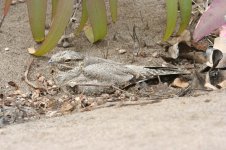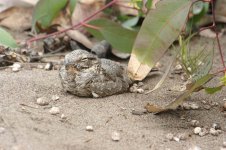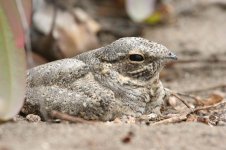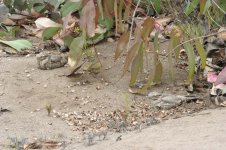Alejandro, yes we are saying it is a Lesser Nighthawk.
This from HBW (for Chordeiles acutipennis):
Descriptive notes.
19-23cm; male 34-62g, female 34-64 g. Sexually dimorphic; at rest , wing-tips reach tip of tail. Crown generally blackish-brown, rest of upperparts brownish, speckled greyish-white and boldly spotted blackish-brown; indistinct buffish or greyish-white nuchal collar; wing-coverts brownish, speckled greyish-white and greyish-brown, speckled and spotted buff, lower marginal coverts often white; scapulars blackish-brown, broadly bordered buff on outer webs; throat patch white (male) or buffish (female); underparts brownish, speckled and spotted greyish-white, cinnamon, tawny and buff, becoming buff barred brown on belly and flanks. Male has white band across four outermost primaries and narrow white subterminal band across all but central pair of tail feathers; female has buffish or buffish-white wing-band and lacks white on tail. In flight both sexes show wing-band becoming narrower towards trailing edge of wing, with inner primaries above band spotted buffish. Iris dark brown, bill blackish, legs and feet brownish or greyish. Immature grey or buffier than adult, with primaries and secondaries tipped greyish-white or tawny.
I view your bird as being immature.








